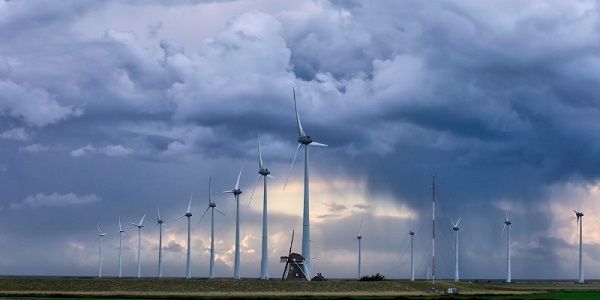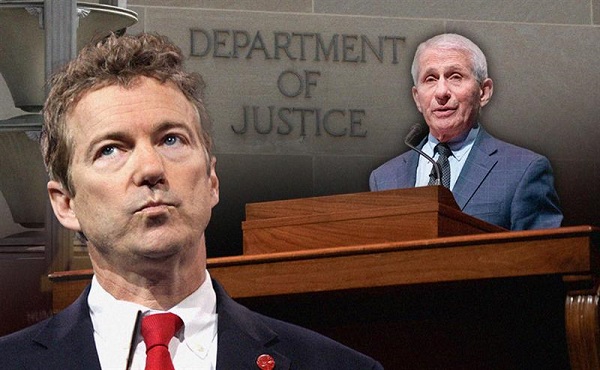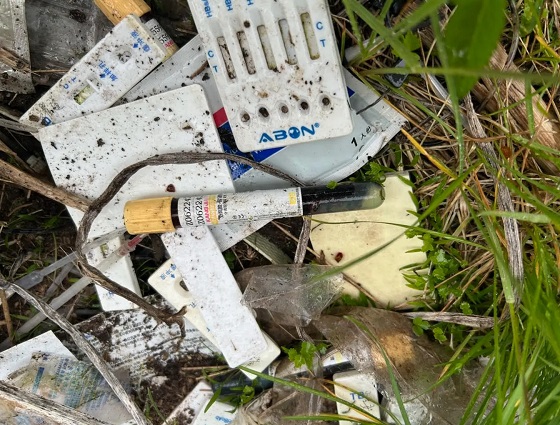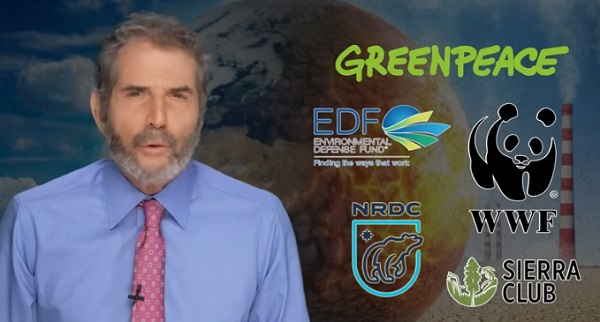Energy
Trump’s Big, Beautiful Bill Spells Bad News For Renewables


From the Daily Caller News Foundation
By David Blackmon
A new report from big energy data and analytics firm Enverus finds that the rapid elimination of subsidies for wind and solar contained in the One Big Beautiful Bill Act of 2025 (OBBBA) is likely to have major impacts on those industries. The report finds that just 30% of solar projects currently proposed or in development and 57% of wind projects will be able to survive as the subsidies and tax breaks phase out by 2030.
These findings are the latest in a string of bad news for the U.S. renewables sector since the inauguration of President Donald Trump in January. On July 16 it was reported via a leaked internal memo that proposed wind and solar projects must now obtain signoff from Interior Secretary Doug Burgum before they can begin development of new projects across tens of millions of acres of federal lands or on the federal offshore waters.
That new requirement is a response to an executive order issued by the President on July 7, authorizing Burgum and other cabinet officials to ensure their departments strictly enforce the language in the OBBBA. In that order, titled “Ending American Dependence on Unreliable Energy Sources,” Trump directs the Secretary of the Interior to “revise regulations and policies to eliminate preferential treatment for wind and solar facilities compared to reliable, dispatchable energy sources.” He also instructs Treasury Secretary Scott Bessent to “terminate the clean electricity production and investment tax credits for wind and solar facilities and implement the enhanced Foreign Entity of Concern restrictions” consistent with the OBBBA language.
In an interview, the author of the Enverus report, Enverus Energy Research Analyst Corianna Mah, told me she and her team limited their analysis to onshore wind and solar projects. “We did not analyze offshore wind,” she said, adding, “We believe it’s already dead in the water due to the high interconnection costs and supply chain inflation.”
Notably, the report finds that the state which leads the nation in installed capacity for both wind and solar generation, Texas, ranks as the state which will see the lowest percentage of solar projects currently in the interconnection queue on the state grid managed by ERCOT – just 6% – will now be able to survive through completion. This compares to survival rates of 40% for Illinois solar, 41% in Indiana, and near-100% survival rates in both California and Arizona.
When I asked what factors would account for such a wide disparity, Mah said it is all driven by the respective values in each state for Renewable Energy Certificates, or RECs. These are marketable instruments that enable individuals or companies to support renewable energy without having to build their own projects.
“Texas has met and surpassed its RPS (Renewable Portfolio Standard) targets,” she said, “and its RECs – now used primarily for voluntary compliance – trade at a steep discount, around $3/MWh, compared to other markets, like CAISO, where RECs command $20-$30/MWh due to mandatory compliance requirements.”
Mah’s report finds that Texas also ranks among the states with the lowest percentages of onshore wind projects expected to survive through completion, along with Iowa and Illinois, for the same reason. But, the report adds, “All evaluated wind projects in Montana and most in Oklahoma” are expected to make it into production.”
The Enverus findings are consistent with findings from a study by FTI Consulting Sr. Director Dan Goodwin, which also finds wind and solar taking a significant hit from the provisions in the OBBBA.
Coming as it does during a time of surging power demand driven by rapidly evolving AI technologies and their accompanying datacenters, this looming shortfall in anticipated wind and solar capacity must now be more than offset by rapid expansions in more traditional baseload generation. FTI’s study projects most of that need will be met by gas-fired generation in the near-to-mid-term, with more nuclear generation coming online in the out years.
This week’s unveiling of $92 billion in new private sector investments to develop the nation’s largest AI datacenter hub outside Pittsburgh, PA, appears to confirm that assessment. One thing is for sure: It’s all a huge balancing act with major implications for America’s future energy security.
David Blackmon is an energy writer and consultant based in Texas. He spent 40 years in the oil and gas business, where he specialized in public policy and communications.
Energy
The Pervasive Myth of a “Grand Bargain” for Alberta Pipelines

From Energy Now
By Ron Wallace and Dennis McConaghy
Following a June 2025 First Ministers meeting in Saskatoon, a session that discussed the federal government’s plan to remove trade barriers and advance major projects of national interest with the Carney governments’ Bill C-5 the One Canadian Economy legislation, the Ministers agreed to “work together to accelerate major projects in support of building a strong, resilient, and united Canada.”
At that meeting Prime Minister Carney highlighted opportunities for Canada to build new export oil pipelines to tidewater – with the proviso that those projects would require parallel investments for carbon capture stating that it’s “absolutely in our interest” to de-carbonize Canada’s oil for export. Reflecting this stance, Alberta Premier Danielle Smith welcomed a “grand bargain” with the Prime Minister based on a bold trade-off: The rapid approval of a new oil pipeline from Alberta to tidewater in exchange for major investments in carbon capture technologies. Alberta has also suggested that it would commit barrels of physical bitumen received in lieu of cash royalties from oilsands producers to encourage a possible private-sector crude pipeline to Prince Rupert, B.C. Understandably, Alberta’s Premier hopes that the province could become a global energy leader by successfully navigating federal climate commitments – a strategy that, if successful could reshape not just Alberta’s, but the entire Canadian, economy.
However, there remain material challenges to this vision. Even with the tentative support from the federal government to fast-track these projects, there remain many challenges: These include B.C.’s skepticism about any new pipelines to their northern coast, Indigenous concerns and existing Acts and Regulations like the C-69 Impact Assessment Act (IAA) and C-48 tanker ban. A Carney-Smith “grand bargain” would entail a new “decarbonized” pipeline to transport 1 million barrels per day of Alberta heavy crude oil to the west coast, a project that Smith calculates would yield annual revenues of CAD$20 billion ($14.6 billion), revenues which she proposes to use to offset the massive estimated CAD$16.5 billion cost of the Pathways Alliance carbon-capture project. Are these assumptions accurate and what are the other policy implications for Canadian energy exports and imports?
First, let’s examine the concept of “decarbonization.”
Carney has advanced the concept of “de-carbonizing” Alberta oil – but what does this mean? If anything, it must mean that the incremental emissions from oil or gas production must be captured and sequestered to reduce global emissions – a proposition that assumes that Canada is the country that determines global demand and that also drives incremental production. Similarly, there are some that argue that Canada could buy off-sets (that is to pay others to stop their existing emissions, to accommodate Canada’s incremental emissions). Leaving aside the issue that the countries that have these offsets to sell are not forced to reduce emissions like Canada, it is highly unlikely that would they be sufficient to offset a potential Canadian oil production increase on the scale of 1.0 million barrels/day.
What would be demanded is that the Canadian hydrocarbon industry physically extract CO2 emissions from the production processes associated with oil sands production, followed by the compression of such emissions to pressures sufficient to enable transport to sequestration sites, typically abandoned or depleted hydrocarbon reservoirs. Presumably this would apply not only to the emissions of the upgrading step for mined bitumen but also for the emissions related to steam generation across all the in-situ recovery sites across north-east Alberta. In face of initial capital cost-estimates for the Pathways Alliance CAD$16.5 billion Carbon Capture and Storage Project (CCS), recent studies indicate that that proposed hub in northern Alberta won’t likely break even without “substantial efficiency improvements” and much better revenue prospects. The blistering analysis by the Institute for Energy Economics and Financial Analysis (IEEFA) concludes that “rising operating costs, uncertain revenues, an oversupplied market for emission credits, and stalled efforts to improve the technology could impede the plan to capture carbon dioxide from a dozen oil sands operations and store it underground at a repository in Cold Lake, Alberta”. Importantly the report finds:
“…. troubling cost implications for the Pathways CO2 transport and storage project and raises the concern that the Canadian federal government and the province of Alberta may be pressured to make up the likely shortfall.”
The brutal reality is that the proposal will likely represent an additional cost of more than $200/tonne of extracted CO2, more likely closer to $300/tonne. In fact, in equivalent $/bbl. terms, estimates of more than $100/bbl. could be optimistic. Most of that cost would be incurred by the ongoing, unavoidable operating costs related to compression. Who pays for this cost? Not crude oil markets. It is simply a cost that Canada would impose on itself to reduce netbacks from exported oil. But imposing that cost would simply impose a loss of market share for Canada. None of Canada’s heavy oil supply competitors are imposing such a cost and no other country is paying that cost. Can Alberta, much less Canada, afford this?
We consider that Carney’s “de-carbonized” oil represents a commercial standard that may be difficult, if not impossible, for Alberta’s hydrocarbon production industry to achieve. Many might consider this to be a sophistry whereby the Carney government professes to be open to another West Coast oil pipeline, or even expanded LNG production, with terms that are impossible to meet.
Next, what are the broader implications for the Canadian economy and the energy industry?
It should come as no surprise that Carney’s recent musing about the “real potential” for decarbonized oil pipelines have sparked debate. The plain fact is that “decarbonization” is specifically aimed at western Canadian oil production as part of Ottawa’s broader strategy to achieve national emissions commitments for net zero. The Alberta Oil sands presently account for about 58% of Canada’s total oil output. Data from December 2023 show Alberta producing a record 4.53 million barrels per day (MMb/d).
Meanwhile, in 2023 eastern Canada imported on average about 490,000 barrels of crude oil per day (bpd) at a cost estimated at CAD $19.5 billion. The Canadian Energy Regulator (2023) indicates that the United States remains the largest source of Canada’s imported crude oil at 72.4%, most of which originated from the U.S. Gulf Coast (68.8%). Nigeria was the second largest supplier of imported crude oil reaching 13% of Canada’s total while Saudi Arabia was third at almost 11%. In 2023 seaborne shipments to major eastern Canadian refineries in New Brunswick averaged around 263,000 barrels per day at an estimated cost of $19.5 billion. Since 1988, marine terminals along the St. Lawrence have seen imports of foreign oil valued at more than $228 billion while the Irving Oil refinery imported $136 billion from 1988 to 2020. Are any of these deliveries subject to “decarbonization” requirements and how do they contribute to Canada meeting its targets for net zero?
Meanwhile, in 2024 Canadian exports of metallurgical coal, largely from B.C., reached 7.4 million tonnes as the Westshore Terminal exported a total of 16 million tonnes from the province. In 2022 these shipments of “non-decarbonized” coal had an export value of $12 billion for metallurgical coal and $2 billion for thermal coal.
Carney’s call for the “decarbonization” of western Canadian produced implies that western Canadian “decarbonized” oil must selectively be produced and transported to competitive world markets under an exclusive, very material, regulatory and financial burden. Meanwhile, western coal exporters and eastern Canadian refiners are allowed to operate free from any comparable regulatory burdens for “decarbonization.” A “decarbonized” oil policy aimed specifically at the Alberta oil sands and pipeline sectors penalizes, and makes less competitive, Canadian producers while ignoring other carbon-laden imports and exports.
These proposed policies reflect a contradictory and unfair federal regulatory requirement that would force Alberta to decarbonize its crude oil production without imposing similar restrictions on imported oil. Many would consider these policies to render the One Canadian Economy Act moot while creating two market realities in Canada – one that favours imports, allows for the unrestricted export of coal and discourages, or at very least threatens, the competitiveness of Alberta oil exports.
The concept of achieving “decarbonized” oil arrives at a time of significant economic and fiscal challenges for Canada. The C.D. Howe Institute predicts that the Carney government is facing a deficit of $92 billion this fiscal year with additional deficits over four years of $78 billion “more than double the level forecast by the parliamentary budget officer before the spring federal election.” These facts compel a careful examination of alternative, cost-effective strategies affecting Canadian oil production and carbon sequestration.
For instance, Lennox recently noted that there are alternative methodologies that could represent a more pragmatic approach to sequestration and which could spur private investment and innovation in cleaner energy production. Bill C-59 earmarked $12 billion in tax credits to reduce the upfront costs of investments in carbon-capture equipment but it specifically excludes a proven method of carbon sequestration, to use CO2-enhanced oil recovery (EOR), from eligibility for its Carbon Capture Utilization and Storage Investment Tax Credit. Lennox suggests that should the Carney government remove this exclusionary clause it could unleash billions in investments in EOR for carbon sequestration.
As Black recently commented:
“If Mark Carney thinks he can stimulate the Canadian economy by embracing a number of these desirable and impressive projects at the same time that he lumbers the economy with tax increases and the continued war on the oil and gas industries to reduce our carbon footprint, the result will be a political and economic disaster. The stimulus of the grant projects will be more than offset by the depressive impact of the continuing war on oil and gas, which may well provoke the voters of Alberta to request consideration of the virtues of secession from Canada, an event that would produce instantaneous concurrence from Quebec for different reasons. An atmosphere of serious political lack of confidence will ensue, and the economy will both evoke and reflect that fact.”
Canadians understand that Canadian regulations for emissions caps and “de-carbonized” oil will not impact the growth of global emissions simply because other heavy producers will meet that demand – most of which would otherwise have been supplied by Canada. In addition to the billions in lost capital investment suffered under the previous Trudeau government, and the potential to incur irreconcilable differences within Confederation, the prospect of “decarbonized” oil represents not a “grand bargain” but a “pyrrhic” ideological victory. Is this what the Carney government would propose to impose on Alberta: To deny economic value to Canada at a crucial time in our economic history while achieving little, or no, reductions in global emissions?
Ron Wallace is a retired, former Member of the National Energy Board. Dennis McConaghy, a former executive at TransCanada Corp., now TC Energy, recently published his third book, “Carbon Change: Canada on the Brink of Decarbonization”.
Energy
CNN’s Shock Climate Polling Data Reinforces Trump’s Energy Agenda


From the Daily Caller News Foundation
As the Trump administration and Republican-controlled Congress move aggressively to roll back the climate alarm-driven energy policies of the Biden presidency, proponents of climate change theory have ramped up their scare tactics in hopes of shifting public opinion in their favor.
But CNN’s energetic polling analyst, the irrepressible Harry Enten, says those tactics aren’t working. Indeed, Enten points out the climate alarm messaging which has permeated every nook and cranny of American society for at least 25 years now has failed to move the public opinion needle even a smidgen since 2000.
Appearing on the cable channel’s “CNN News Central” program with host John Berman Thursday, Enten cited polling data showing that just 40% of U.S. citizens are “afraid” of climate change. That is the same percentage who gave a similar answer in 2000.
Dear Readers:
As a nonprofit, we are dependent on the generosity of our readers.
Please consider making a small donation of any amount here.
Thank you!
Enten’s own report is an example of this fealty. Saying the findings “kind of boggles the mind,” Enten emphasized the fact that, despite all the media hysteria that takes place in the wake of any weather disaster or wildfire, an even lower percentage of Americans are concerned such events might impact them personally.
“In 2006, it was 38%,” Enten says of the percentage who are even “sometimes worried” about being hit by a natural disaster, and adds, “Look at where we are now in 2025. It’s 32%, 38% to 32%. The number’s actually gone down.”
In terms of all adults who worry that a major disaster might hit their own hometown, Enten notes that just 17% admit to such a concern. Even among Democrats, whose party has been the major proponent of climate alarm theory in the U.S., the percentage is a paltry 27%.
While Enten and Berman both appear to be shocked by these findings, they really aren’t surprising. Enten himself notes that climate concerns have never been a driving issue in electoral politics in his conclusion, when Berman points out, “People might think it’s an issue, but clearly not a driving issue when people go to the polls.”
“That’s exactly right,” Enten says, adding, “They may worry about in the abstract, but when it comes to their own lives, they don’t worry.”
This reality of public opinion is a major reason why President Donald Trump and his key cabinet officials have felt free to mount their aggressive push to end any remaining notion that a government-subsidized ‘energy transition’ from oil, gas, and coal to renewables and electric vehicles is happening in the U.S. It is also a big reason why congressional Republicans included language in the One Big Beautiful Bill Act to phase out subsidies for those alternative energy technologies.
It is key to understand that the administration’s reprioritization of energy and climate policies goes well beyond just rolling back the Biden policies. EPA Administrator Lee Zeldin is working on plans to revoke the 2010 endangerment finding related to greenhouse gases which served as the foundation for most of the Obama climate agenda as well.
If that plan can survive the inevitable court challenges, then Trump’s ambitions will only accelerate. Last year’s elimination of the Chevron Deference by the Supreme Court increases the chances of that happening. Ultimately, by the end of 2028, it will be almost as if the Obama and Biden presidencies never happened.
The reality here is that, with such a low percentage of voters expressing concerns about any of this, Trump and congressional Republicans will pay little or no political price for moving in this direction. Thus, unless the polls change radically, the policy direction will remain the same.
David Blackmon is an energy writer and consultant based in Texas. He spent 40 years in the oil and gas business, where he specialized in public policy and communications.
-

 COVID-192 days ago
COVID-192 days agoFreedom Convoy leaders’ sentencing hearing to begin July 23 with verdict due in August
-

 Business2 days ago
Business2 days agoConservatives demand probe into Liberal vaccine injury program’s $50m mismanagement
-

 COVID-192 days ago
COVID-192 days agoSen. Rand Paul: ‘I am officially re-referring Dr. Fauci to the DOJ’
-

 Business2 days ago
Business2 days agoIt’s Time To End Canada’s Protectionist Supply Management Regime
-

 Business2 days ago
Business2 days agoCanada must address its birth tourism problem
-

 Immigration2 days ago
Immigration2 days agoPrince Edward Islanders Want Answers After Finding Biomedical Waste From PRC-Linked Monasteries
-

 Alberta2 days ago
Alberta2 days agoMedian workers in Alberta could receive 72% more under Alberta Pension Plan compared to Canada Pension Plan
-

 John Stossel2 days ago
John Stossel2 days agoThe Green Industrial Complex: Power, Panic, and Profits




